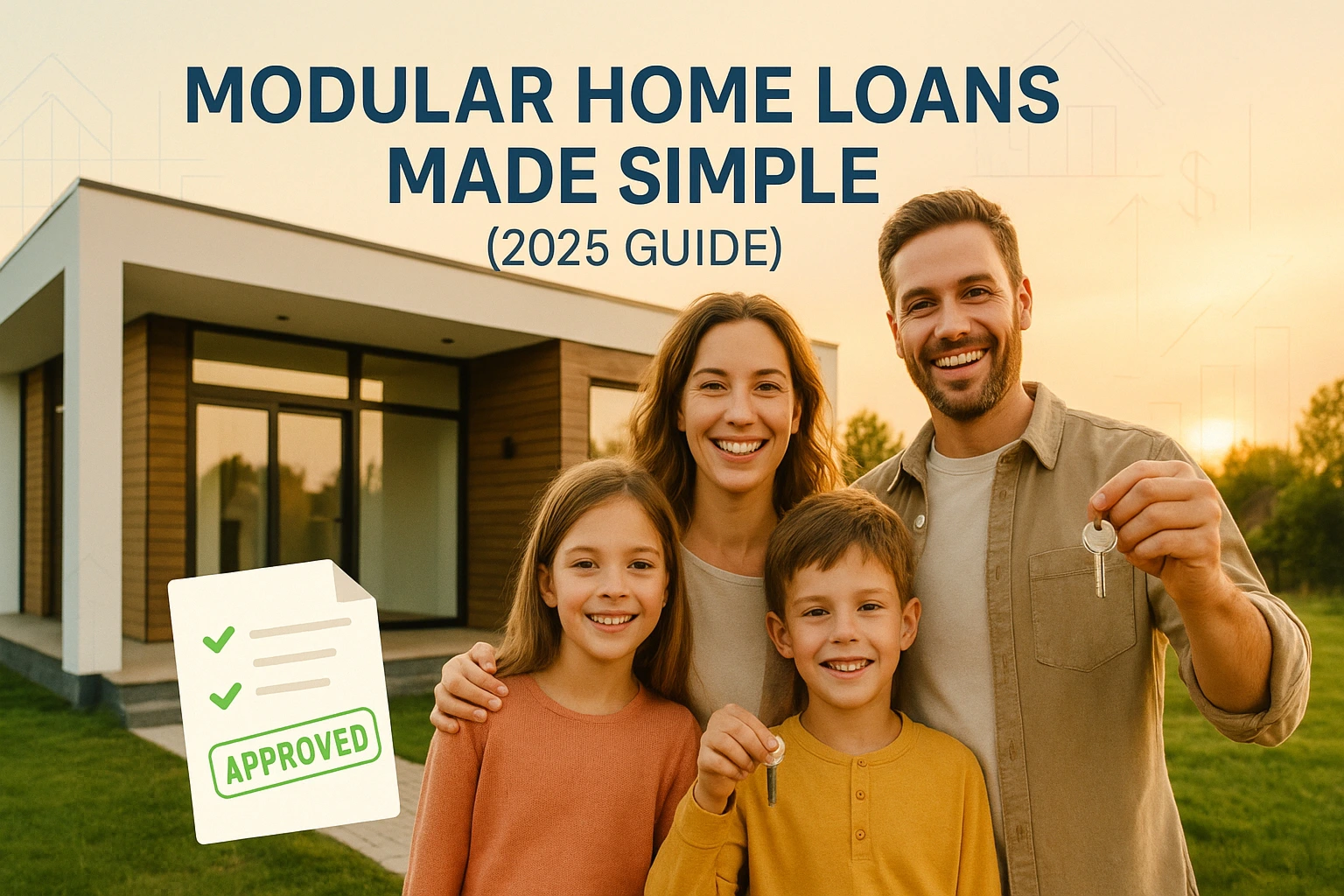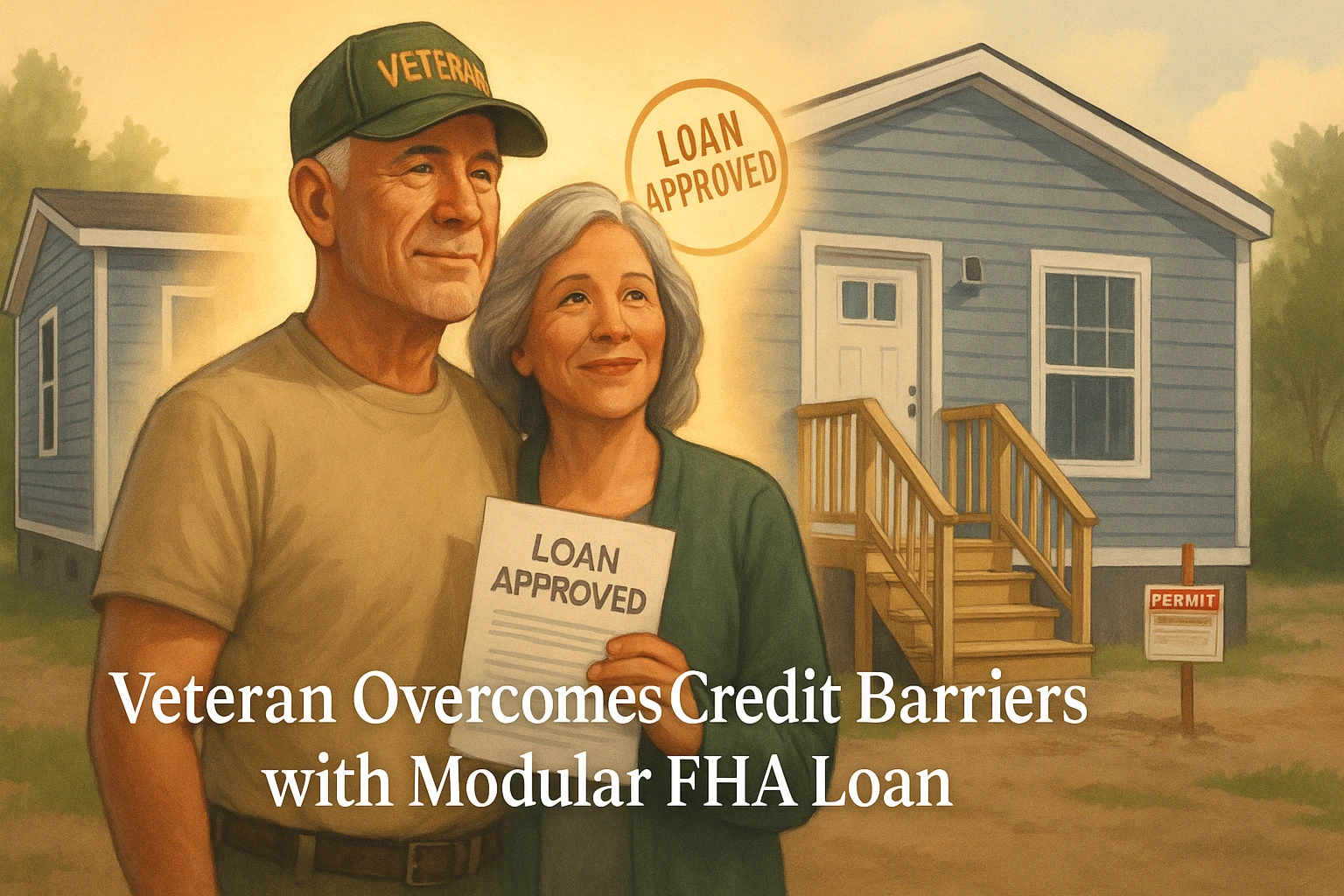
Building your dream home in 2025 starts with understanding modular homes—a smart, affordable path to modern homeownership. This comprehensive guide dives into everything from financing options to construction tips, helping you navigate the process with confidence. Whether you’re a first-time buyer or a seasoned investor, discover how modular homes can make your vision a reality in just months.
Why Modular Homes Are the Smart Choice
Let’s explore why modular homes are gaining popularity. They blend affordability with modern design, offering energy-efficient builds straight from the factory. This approach saves up to 15% compared to traditional site-built homes, making them a budget-friendly choice for many.
In 2025, lenders are increasingly embracing modular home financing, opening doors for buyers. Curious about budgeting or choosing the right lender? Check out our guide on budgeting and lender tips for 2025.
What Is a Modular Home?
A modular home is constructed in factory-built sections, then assembled on-site atop a permanent foundation. Unlike manufactured homes, they adhere to local building codes, ensuring durability and strong resale value.
Benefits of Modular Homes
- Fast construction (3–5 months): Factory settings sidestep weather delays, speeding up your move-in.
- Cost-effective (10–15% cheaper): Streamlined production cuts waste and costs.
- Customizable designs: Choose floor plans and finishes that match your style.
- Energy-efficient features: Superior insulation lowers utility bills.
- Strong resale value: Code-compliant homes hold their worth.
For a deeper dive, explore our guide on pros, cons, and financing tips.
Case Study: Sarah’s USDA Loan Success
Sarah, a single mother in Texas, used a USDA loan in 2024. With a modest income, she struggled to save for a down payment. Her owned land’s equity covered the requirement, and the USDA’s 0% down option sealed the deal. Despite a rural appraisal challenge, her lender used local comps to approve the loan. “My 3-bedroom home was ready in four months, and I’m saving on utilities!” she says.
How Modular Home Financing Works in 2025
Modular vs. Traditional Mortgage
Modular home loans combine construction and permanent financing, setting them apart from traditional mortgages. Here’s how they compare:
| Feature | Modular Home Loan | Traditional Mortgage |
|---|---|---|
| Construction | Factory-built, assembled on-site | Built on-site |
| Loan Type | Construction-to-permanent | Purchase mortgage |
| Funds Disbursed | In stages (draws) | Lump sum at closing |
| Appraisal | Based on plans + specs | Based on existing home |

“Modular home loans are more accessible in 2025, with lenders offering flexible terms.” – John Smith, Mortgage Advisor
Key Takeaways:
- Modular loans fund both construction and permanent financing.
- Funds are released in stages, unlike lump-sum mortgages.
- Appraisals rely on plans, not existing homes.
Want to know what lenders might not tell you? Discover hidden lender practices to stay informed.
Step-By-Step: Securing a Modular Home Loan in 2025
Step 1: Get Pre-Approved 🚦
Pre-approval defines your budget and signals to builders that you’re serious. Use our free mortgage calculator to estimate monthly payments.
Why Modular Home Loan Pre-Approval Matters
It clarifies your financial limits and accelerates the loan process, giving you a head start.
Lender Checklist:
- Credit score (620+ preferred)
- Stable income
- Debt-to-income ratio
- Down payment funds
- Land ownership plans
Step 2: Secure Land & Choose a Builder
Your modular home needs land, whether you own it or plan to finance it. Land equity can reduce your upfront costs. Learn more in our guide on using land equity.
| Land Status | Loan Benefit |
|---|---|
| Owned outright | Counts as down payment |
| Partially paid | Equity reduces cash needed |
| Buying with loan | Finances land + home |
Builder Tips:
- Choose a lender-approved builder.
- Sign a detailed contract with specifications.
Step 3: Apply for the Loan
Submit your application with all required documents to avoid delays.
Required Documents:
- ID (license, SSN)
- Pay stubs, W-2s
- Tax returns (2 years)
- Bank statements
- Land deed or agreement
- Builder contract & specs
Step 4: Appraisal & Underwriting
Lenders appraise based on plans and local comps while reviewing your finances and builder credentials.
“Complete builder plans ensure a smooth appraisal.”
Step 5: Construction & Draws
Funds are released in stages, each requiring inspections to ensure progress.
Stages Include:
- Land purchase
- Foundation
- Module delivery
- Finishing work
- Final inspection
Step 6: Close & Move In
After final inspection, your loan converts to a permanent mortgage. Sign papers, secure insurance, and move in! 🎉
Final Steps:
- Walkthrough
- Certificate of occupancy
- Closing
For a clear breakdown, see our guide to rates and requirements.
Types of Modular Home Loans
Choosing the right financing for your modular home in 2025 is key to success. USDA loans shine for rural buyers with 0% down, but other options suit different needs. Explore five smart financing paths to find your best fit.
| Loan Type | Best For | Down Payment | Credit Score | Rate | Notes |
|---|---|---|---|---|---|
| Construction-to-Permanent | Most buyers | 5–20% | 620+ | Variable to fixed | Single closing |
| FHA | Low down payment | 3.5%+ | 580+ | Low | HUD standards |
| VA | Veterans | 0% | 620+ | Low | VA eligibility |
| USDA | Rural buyers | 0% | 640+ | Low | Income limits |
| Separate Land + Construction | Complex land situations | 5–20% | 620+ | Varies | Multiple closings |
Which Modular Home Loan Fits Your Scenario?
Construction-to-Permanent: Best for most buyers. Pros: Single closing, flexible terms. Cons: Higher down payment (5–20%). Example: Tom used it for a $300,000 home with 10% down.
FHA: Ideal for first-time buyers. Pros: 3.5% down, lenient credit. Cons: PMI costs. Example: Lisa got approved with a 620 score but paid PMI.
VA: Perfect for veterans. Pros: 0% down, low rates. Cons: VA eligibility required. Example: Mark, a veteran, saved thousands with no down payment.
USDA: Great for rural buyers. Pros: 0% down, low rates. Cons: Income limits, rural only. Example: Sarah used land equity for a USDA loan.
Separate Land + Construction: For complex land deals. Pros: Flexible financing. Cons: Multiple closings. Example: A developer used it for a multi-phase project.
New to home buying? Check out our first-time buyer tips for modular homes.
Key Takeaways:
- Construction-to-permanent loans suit most buyers.
- FHA and USDA offer low or no down payments.
- VA loans are ideal for veterans.
- Match your scenario to the right loan type.
Case Study: Mark’s VA Loan Victory
Mark, a 40-year-old Arizona veteran, used a VA loan with 0% down. His tight budget made traditional loans tough, but VA eligibility simplified approval. He faced an appraisal delay due to limited modular home comps, but his builder provided recent sales data, securing the loan. “The VA loan made my dream home possible, built in five months,” Mark says.
Find Your Best Home Loan Quiz
Not sure which loan is right for you? Take our quick quiz to get a personalized recommendation tailored to your needs.

Loan Readiness: Are You Prepared?
Wondering if you’re ready to secure financing in 2025? Our free eligibility quiz offers tailored advice to boost your approval odds.
Home Financing Eligibility Quiz
Why Take It?
- Assesses your readiness in minutes.
- Delivers personalized tips to improve your chances.
- Helps you plan your budget with confidence.
Instructions: Answer five questions to evaluate your loan readiness.
“The readiness quiz showed me exactly what to fix to get approved!” – Maria, First-Time Buyer
Common Approval Hurdles
Securing a modular home loan can feel daunting, even for strong applicants. Let’s break down four common challenges and how to tackle them. For more on navigating these obstacles, see our guide to surprising loan requirements.
1. Low Credit Score
Why It Matters: Lenders favor scores above 620 for better rates.
Example: John’s 590 score led to rejection. He paid off $5,000 in debt, raising his score to 630 in months.
Solutions:
- Pay down high-interest debt to boost your score.
- Check your credit report for errors at AnnualCreditReport.com.
- Add a co-borrower with strong credit.
- Save for a larger down payment to offset risk.
2. Insufficient Down Payment
Why It Matters: Loans typically require 3.5–20% down, which can be a stretch.
Example: Maria used $50,000 in land equity to meet her $500,000 loan’s down payment.
Solutions:
- Leverage land equity to meet requirements.
- Explore FHA (3.5%) or USDA/VA (0%) loans.
- Apply for down payment assistance programs.
- Opt for a smaller home to reduce loan size.
Testimonial: “I thought the down payment was out of reach,” says Tom from Georgia. “My lender used my land equity for an FHA loan!”
3. Incomplete Builder Documents
Why It Matters: Lenders require detailed plans and contracts for approval.
Example: Lisa’s application stalled due to missing cost breakdowns. A lender-approved builder resolved it.
Solutions:
- Work with experienced, lender-approved builders.
- Ensure contracts include fixed prices.
- Verify plans meet local codes.
- Submit documents upfront.
4. Appraisal Gaps
Why It Matters: Rural areas often lack comps, leading to low appraisals.
Example: Mike’s appraisal came in $20,000 low. His builder provided comps to adjust it.
Solutions:
- Build in areas with recent modular sales.
- Provide lenders with comparable sales data.
- Negotiate with builders to adjust costs.
- Consider alternative loan types.
Key Takeaways:
- Improve credit to boost approval odds.
- Use land equity for down payments.
- Ensure complete builder documents.
- Address appraisal gaps with comps.
Case Study: Lisa’s FHA Loan Triumph
Lisa, a 30-year-old Florida teacher, faced rejection due to her 580 credit score. She paid off $3,000 in credit card debt and disputed a report error, raising her score to 620 in five months. An FHA loan with 3.5% down got her a modular home, though PMI added costs. “I worked hard to improve my credit, and the FHA loan made it possible,” Lisa says. Her home was completed in four months.

Looking Ahead: 2025 Trends
The modular home financing landscape is shifting in 2025, with new opportunities and challenges on the horizon. Here’s what to watch for:
- Rising Interest Rates: Rates may climb, so lock in early to save. For example, a 0.5% rate hike could add $100 to your monthly payment on a $300,000 loan.
- Green Financing: Lenders are offering rebates for energy-efficient homes. Some programs provide up to $5,000 in rebates for solar panels or energy-efficient insulation.
- Tech-Driven Approvals: AI is speeding up underwriting processes, cutting approval times by up to 50% in some cases.
- Urban Modular Growth: Cities are expanding financing for modular homes, with some offering tax incentives for urban modular developments.
Stay ahead with our guide on 2025 financing changes.
Case Study: Emma & James’ Green Loan
Emma and James, a young Oregon couple, used green financing for their modular home. A low appraisal due to rural comps stalled their loan, but their builder provided recent sales data, securing approval. The lender’s rebate for energy-efficient features saved $5,000. “The green loan made our eco-friendly home affordable,” they say. Their home was built in five months.
Frequently Asked Questions
Key Takeaways
Here’s what you need to know to succeed with modular home ownership in 2025:
- Modular home loans blend construction and permanent financing.
- Pre-approval sets your budget and speeds up the process.
- Land equity can cover your down payment.
- Choose experienced builders to avoid delays.
- Explore FHA, VA, or USDA loans for low or no down payments.
- Apply early in 2025 to lock in rates before potential increases.
- Use our free quiz to check your readiness.
Next Steps
Ready to embark on your modular home journey? Here’s how to get started:
- Gather Documents: Prepare income, credit, and land details.
- Test Readiness: Take our eligibility quiz above.
- Find Experts: Connect with modular loan specialists.
Don’t Let Cash Flow Kill the Deal
Get Up to $50K in DSCR-Friendly Personal Loans